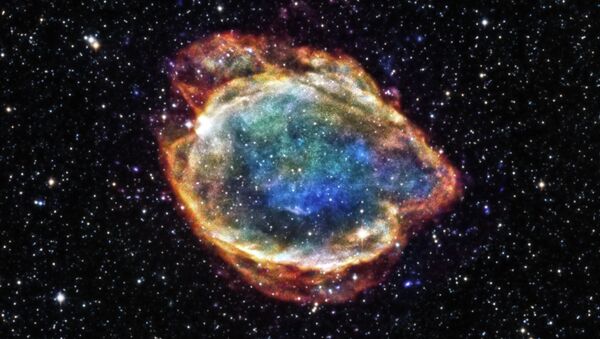An oddly-shaped supernova remnant born out of a thermonuclear explosion in the constellation of Musca has puzzled scientists since it was first observed. NASA published a stunning new image of the exploded star offering an insight into the flower-like celestial structure.
Exploded star blooms like a cosmic flower! @ChandraXray observes supernova remnant: http://t.co/U3cqP1dvw6 pic.twitter.com/qS5ygUNJM1
— NASA (@NASA) 12 февраля 2015
G299.2-2.9, as it is formally known, was left by a Type Ia supernova, which occurr in binary systems, consisting of two white dwarfs or a white dwarf and a giant star. Such supernovae usually leave behind bright perfect spheres. But contrary to the laws of physics or at least our understanding of them, the enigmatic G299.2-2.9 is expanding differently in various directions.
"It might also be that the remnant has been expanding into an environment where the medium it encountered was uneven," Chandra said in a press release.
The G299.2-2.9 supernova remnant is located approximately 16,000 light years away from the Earth in the Milky Way. The explosion, which created it, is estimated to have occurred 4,500 years ago.


